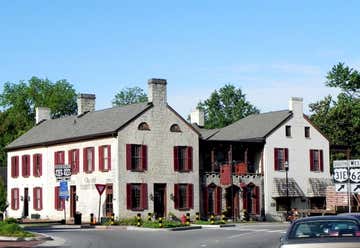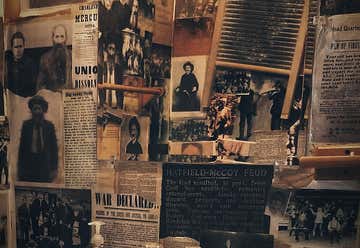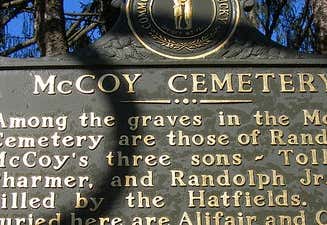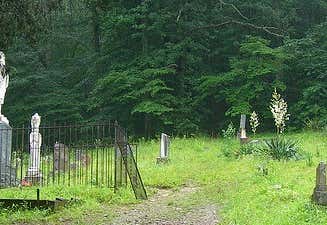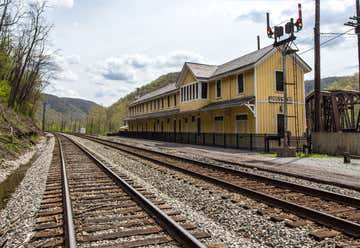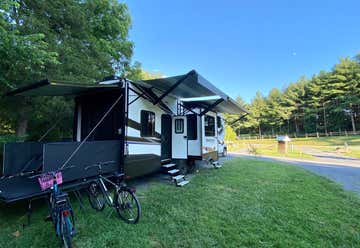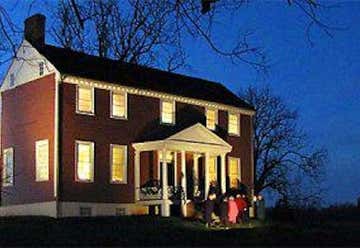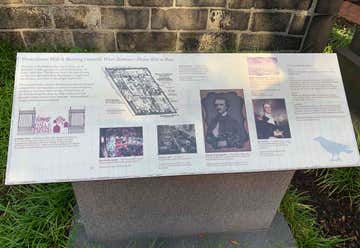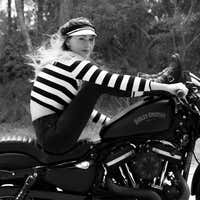Whiskey history is a long, adventurous story, and many brave people fought to keep the drink flowing along the way. Most of whiskey history has been about simple survival, starting from its earliest days in this country and distillers were the original 1%ers of their day.
The birth place of the American Whiskey can be traced back to the states of Virginia, Maryland and Pennsylvania in eastern United States. In the year 1791, whiskey began being brewed as a rye based product. The then incumbent president saw promise of added revenue in the venture and so sought to levy taxes on it, which was met by open resistance. This debacle came to be known as the “Whiskey Rebellion.” Irish pioneers who settled in the hilly states of Tennessee and Kentucky were the first to begin brewing American whiskey. In those states they could easily find the necessary raw materials and other resources that made the process of producing liquid sunshine as easy as pie and as American as the Apple kind.
On my way to Babes Ride Out East I partnered up with Slow N Low to do a "History of Whiskey" tour since I will be riding through all the states where this stiff drink started. I did my best to pick the unusual and the stories not really told on google. Some of the information is known before but a lot is left to be discovered as I will be traveling the same roads, sleeping in the same places and drinking in the same taverns that the men and women who made whiskey what it is once did many years ago.
Growing up this was my playground. My elementary school was across the road and after class we would go out and climb the stone walls pretending we were living in a castle. I never knew much about the history until I was older and now it makes sense to start the trip from this place. Not only is it a few miles from my home, it is also a building steeped in liquor history.
Colonel William Bell was a Revolutionary War Veteran who came here from Virginia, and settled on a 3,500 acre land grant, building a plantation that was eventually measured off into plats and lanes that would become known first as Three Forks, and later as Bell’s Station. In the 1820s, three major roads met at this spot, and at this crossroads, Bell built a small inn and tavern so the stagecoaches could stop, and weary travelers could find aid and accommodations.
Col. Bell himself prepared his favorite appetizer, a homemade peach brandy and honey, a beverage of exhilarating potency, and he was very generous in dispensing it. Coffee was served from a silver coffee pot that was carried from table to table by Bell’s favorite slave, a timeless old gentleman named Jim, who had serverd both George Washington and Thomas Jefferson in his youth.
After the death of Col. bell in January of 1853, his son’s widow, Mrs. Robert Slaughter Bell continued to run Bell’s establishment, and maintained the tavern’s reputation for the remaining years of its existence.
Bell’s Tavern was completely destroyed by fire on a night in late 1859 or early 1860. The Family planned to build a magnificent stone structure in its place, the proportions and appointments of which would be worthy of the tavern’s reputation. The building was to be 105 feet in length and about 60 feet wide but the outbreak of the Civil War doomed completion of the new tavern that was begun by Col. Bell’s grandson, William F. Bell, and his step-father George M. Proctor. The massive walls of dressed stone had reached a height of 15 feet or so before the work stopped, never to be resumed.
Since the route is themed the "History of Whiskey" what better place to make the first stop then at Oscar Getz Museum of Whiskey. The museum is located at the heart of the bourbon Trail and displays a 50 year collection of rare artifacts and documents concerning the American whiskey industry dating from pre-Colonial days to post-Prohibition years. The exhibits includes features on President Washington, Abraham Lincoln, authentic moonshine stills, antique bottles and jugs, medicinal whiskey bottles, unique advertising art, novelty whiskey containers, and just about anything to do with whiskey.
Prohibition Exhibit from Frazier Museum: Prohibition and Kentucky brings the 1920’s to life & shows how millions of otherwise law-abiding Americans chose to violate the national alcohol ban to quench the country’s thirst for illegal booze. With two full sized bars, an event-ready Speakeasy with a lighted stage, and flapper dresses around every corner, Prohibition and Kentucky stands ready for a party. In 1920, you needed a doctor’s prescription or a Speakeasy password to get your lips on some liquor. Today, both the great stories, and the spirits, are much easier to come by.
Prohibition and Kentucky traces the rise of the temperance movement, organized crime, and the repeal of the 18th Amendment in 1933, taking an in-depth look at America’s “Noble Experiment.”
The Old Talbott was built in 1779 and has been called the oldest western stagecoach stop in America. The Tavern is located at the crossroads of the young west, where the Post roads, North, East, South, and West met, caused every stagecoach to stop at its door. Through the welcoming portals of the Old Tavern, there passed a long procession of statesmen, solders, adventures, artist, and rulers. Andrew Jackson knew of the warmth of the hearth fire in the central room. There, Henry Harrison found cheer in its friendly atmosphere. General George Rodgers Clark used the tavern as a base; provisions and munitions were brought overland from Virginia and stored in the cellars of the tavern.
During King Louis Phillippe’s exile, he, his two brothers, and other members, desiring to see the New World, arrived at Tavern on October 17, 1797. During their stay, one or more of the entourage is belied to have painted the murals which were uncovered in 1927. A dozen or more holes are found in the plaster in the room. Legend tells us that the bullet holes were left behind by Jesse James. Related to Donnie Pence, sheriff of Nelson County, it’s reported that he had too many drinks in the Pub one evening the went upstairs to sleep it off. He “saw” birds moving in the murals and shot at them, leaving behind the bullet holes we see today.
Washington Irving (1783 – 1859) earned his reputation as a major author by creating the short story. Just inside the Talbott's lobby door is the actual spot where, in 1802, “the kiss was stolen” – immortalized in Irving’s short story The Early Experiences of Ralph Ringwood. Irving had a way of combining folklore with romanticism in his literary works.
Babes Ride Out is an all women's motorcycling event that celebrates ladies in a male dominated industry and nothing represents that more than the women who dedicated their lives in the Civil War.
The only museum of its kind, the Women’s Museum of the Civil War, specializes in the fascinating history of the female writers, spies, nurses, administrators and combat soldiers of the period. The Women's Museum of Civil War and the connected Civil War Museum and together they are America’s largest and most complete Museums devoted to the Western Theater of the American Civil War.
Over 8000 Square feet of authentic period exhibits tell of the struggle between the forces of the Union and Confederacy, from the Appalachian Mountains west to the Mississippi and south to Georgia and the Gulf of Mexico.
The Mary Todd Lincoln House was for seven years the girlhood home of Abraham Lincoln’s wife. But before and after that period in the 1830s, it was much more: a tavern called "The Sign of the Green Tree", a boarding house, a store and the brothel where Belle Brezing learned her trade.
The tavern was operated by William P. Monteer who sold the property to Robert S. Todd, Mary Todd’s father, in May 1832. Mary Todd was thirteen years old when the Todds moved there, and this was her home until she left Kentucky to live with her sister Elizabeth Edwards in Springfield, Illinois, in 1839.
Interesting and little known fact about the Lincoln assignation :
Charles J. Colchester also warned Lincoln. He was no solicitous friend, like Swett or Cole. Indeed, Lincoln hardly knew Colchester. But he was important to Mary Todd Lincoln, the president’s wife, and had become a regular visitor to the White House. Oddly, this strange character, a spiritualist and medium, was the one person Lincoln should have heeded. Colchester needed none of his prophetic powers to realize the president was in danger. His information likely came from the best of earthly sources—his friend and drinking buddy John Wilkes Booth.
When Booth shot Lincoln on April 14, 1865, at Ford’s Theatre, the search for the assassin and his accomplices commenced immediately. Col. Henry H. Wells, a top military policeman, went to the National Hotel to look for information about the actor. Bunker, the room clerk, told him about Booth’s association with Colchester and said the medium had been staying at the Washington House hotel. But Wells couldn’t find Colchester at the Washington, nor anywhere else in the city. Like the spirits he summoned, Colchester had disappeared.
The Hatfields and McCoys were making moonshine and whiskey well before the feuding began, about 150 years ago. Members of the two clans wrote down recipes on the back pages of family Bibles or stored them in Mason jars.
The last person they wanted to share them with was a Hatfield or McCoy and so it seems fitting that my first place to stop for a stay over is here because whiskey may have caused many people to fall in love but it's also be the root of many fights too.
Hatfield McCoy House Inn is a quaint country inn located in the heart of Feud Country. This folk Victorian, built in 1896, is the oldest standing building in town.
J.M. Smith, the mother of Mrs. Linkous, built this house for his wife, then he built an opera house next door, so she would have some entertainment.
Wendy, the current owner, calls herself ‘bi-feudal’, descendant of both the Hatfields and McCoys, a third generation granddaughter of both Uriah McCoy and Preacher Anderson Hatfield.
The McCoy Cemetery where three of Randolph McCoy’s sons—Tolbert, Pharmer, and Randolph, Jr. are buried. All three brothers, as well as Alifair and Calvin McCoy were killed by Hatfields in various incidents.
Tolbert, twenty-eight, Pharmer, nineteen, and Randolph, Jr., eighteen, were involved in the 1882 election day incident that left Ellison Hatfield dead and ended with the notorious pawpaw tree affair. Their mother, Sarah, “Old Sally” McCoy, was among those who visited William “Devil Anse” Hatfield to beg him for mercy for their kin as his brother Ellison teetered between life and death.
Thirty-year-old Alifair was killed during the New Year’s Eve raid in 1888, a murder for which Ellison Mounts eventually faced the gallows, despite persistent rumors that William Anderson “Cap” Hatfield actually pulled the trigger. Calvin, twenty-six, was also killed during the New Year’s Eve raid.
The Hatfield Family Cemetery is next to a crumbling abandoned church on a forlorn section of Route 44 in Sarah Ann, W.Va. There’s an imposing iron sign and three tall wooden crosses staked up on a tree-covered hill, but the place is mostly overgrown and neglected. As I climbed the unpaved path to the old hilltop cemetery, I passed a handwritten sign that warned, “Smile! You are now being videoed due to theft!”
When William Anderson “Devil Anse” Hatfield died of pneumonia at 81, his heirs sent photos of him to a craftsman in Italy, who constructed an impressive marble statue with his likeness. The statue towers over all the other memorials in the derelict cemetery.
In the 1770s, William Michie built his home on the land after inheriting it from his father. In the 1780s, responding to the frequency with which travelers knocked on his door seeking food and shelter, Michie built a tavern next to his home. In 1784, he received a license to operate an ordinary, charging money for food and beds. Because of the new government, a license was now required. Under British rule, such was never obtained or deemed necessary. By this time the Tavern was a popular stopping place during “Public Times” or elections at the courthouse nearby.
William was politically active, and a crowded Inn afforded the opportunity to express his views. Earlier in 1779, when local countrymen were weakening in their support of America’s cause, William signed the Albemarle Declaration of Independence and most likely persuaded his patrons to follow suit. One can almost imagine the heated political discussions that took place over a tankard of ale or spiced rum.
The tavern remained in the Michie family until 1910, when Sally Michie, the last member of the family to own the property, was institutionalized and the property reverted to state ownership. In 1927, the Via family bought the tavern from the state and subsequently sold it to Josephine Henderson who wanted it for showcasing her extensive antiques collection. It was Henderson who moved the tavern in 1927 to its present location near Monticello, where she thought it would attract more tourists. The tavern building was dismantled and then reassembled for the move.
In 1791 a new tax was introduced to help fund debt from the Revolutionary War. Although the tax applied to distilled spirits of any kind, whiskey was the most popular, and so the excise became commonly known as the “Whiskey Tax.”
From 1791 to 1794 the ensuing unrest between grain farmers and the US government was soon dubbed the “Whiskey Rebellion" and farmers refused to pay the tax. The newly formed Democratic-Republican Party, led by Thomas Jefferson, would pledge to repeal the tax if voted into power, and when Jefferson took office in 1801, he did just that.
Monticello was the primary plantation of Thomas Jefferson, the third President of the United States, who began designing and building Monticello at age 26 after inheriting land from his father.
In honor of Memorial Day I'm visiting the sight of the Wilderness Battlefield. Fought May 5–7, 1864, was the first battle of Lt. Gen. Ulysses S. Grant's 1864 Virginia Overland Campaign against Gen. Robert E. Lee and the Confederate Army of Northern Virginia in the American Civil War. Grant watched both of his flanks crumble on May 6 and lost more than twice as many soldiers (about 18,000 to 8,000) as did Lee. When the battle ended 26,000 men laid scattered dead across the field.
This day reminds us that freedom truly isn't free. Remember the ones who never came home and the ones who did but bare the emotional and physical scars that will stay with them the rest of their lives. Thank these men and women and the friends and families who support and sacrifice too so that we can eat hotdogs and get cars for zero percent financing.
Morn the men and women who died but be grateful that they lived because in the aftermath, we are because they were.
Thank you for your service
The home was built circa 1793 and was the home of Fielding and Betty Washington Lewis and is the only surviving structure from the 1,300-acre (530 ha) Kenmore plantation. Betty was the sister of George Washington. The Kenmore Inn opened for business in 1932 making it Fredericksburg’s longest operating inn.
Charles Washington, George Washington's youngest brother, built this landmark in the 1760's as his private residence. After being sold outside the Washington family, the building was leased as a tavern in 1792.
The tavern was a popular stop for many, including John Marshall, James Madison, Thomas Jefferson, George Mason, and John Paul Jones, among others, during the American Revolutionary War. It was the site of George Washington's "great reception" after the Battle of Yorktown. It was also the site of the first meeting of the Virginia Chapter of the Society of Cincinnati in 1783.
3200 Mount Vernon Memorial Hwy, Mount Vernon, VA, US
Our first president had a bit of a contentious and curious history when it came to whiskey. On the one hand, George Washington enacted a whiskey tax to pay off state debts that had stacked up during The Revolutionary War. It sparked off a rebellion in 1791, resulting in federal troops marching on and dispersing thousands of disenfranchised distillers. On the other hand, his estate was, at one point, one of the biggest rye whiskey distillers in the fledgling nation.
At the suggestion of his shrewd farm manager, a Scotsman named James Anderson, Washington had a whiskey distillery constructed next to his gristmill. At the time of its completion in 1797, it was the largest distillery in America, measuring 2,250 square feet and boasting five copper stills and a boiler. Anderson, who had worked as a distiller in Scotland, quickly turned this new endeavor into Washington’s most successful enterprise. During the final year of Washington’s life in 1799, the distillery produced nearly 11,000 gallons of whisky, making it the largest producer of spirits in America.
While rye was typically the base-grain, in times of shortage, wheat was substituted in, and the distillery also produced peach, apple and persimmon brandies. The distillery’s most commonly used mash bill was 60% rye, 35% corn and 5% malted barley. It’s worth noting though, that his spirit was sold without any significant barrel aging, so regardless of the mash bill, Washington’s whiskey probably tasted like burning. It’s also worth mentioning that Thomas Jefferson was not a fan of the way Washington handled the whiskey rebellion—particularly mustering troops to march against citizens. He repealed the whiskey tax as soon as he came into power in 1801.
George Washington’s beloved Mount Vernon began as a one and one-half story house built in 1735 by his father, Augustine, and received its well-known name during the ownership of his half-brother Lawrence. George acquired Mount Vernon in 1754, and over the next 45 years slowly enlarged the dwelling to create the resplendent 21-room residence today. Washington personally supervised each renovation; advising on design, construction and decoration—even during the Revolutionary War. Conscious that the world was watching, Washington selected architectural features that expressed his growing status as a Virginia gentleman planter and ultimately as the leader of a fledgling democratic nation.
Counted among the Gadsby’s famous guests are several of American Founding Fathers, as well as the French hero of the Revolutionary War, General Marquis de Lafayette. Presidents George Washington, John Adams, Thomas Jefferson, James Madison, and James Monroe are all known to have visited the tavern; Jefferson, a native Virginian, even held his inaugural ball here.
Yet despite being host to such prominent dignitaries, Gadsby’s Tavern was frequented by guests of more common means as well. In an era where the average white male earned between $1.00 and $1.50 per day, Gadsby’s charged 50 cents for a meal with beer or cider included. To spend the night at at the inn cost only 20 cents, though guests would have to squeeze together, with up to three people sharing each bed.
By the early 1900s, Gadsby’s had been renamed as the City Hotel and Tavern and was no longer seen as the fashionable destination it had once been. Over the subsequent decades, the tavern closed and fell into disrepair. The city began plans to demolish the structure, but it was saved by the local chapter of the American Legion, who repaired the building and used it as their lodge.
Crownsville, Maryland, United States
The former home of American writer Edgar Allan Poe in the 1830s. Edgar Allan Poe moved in with the family in 1833 around the age of 23, after leaving West Point. Virginia (his wife) was 10 years old at the time; Poe would marry her three years later, though their only public ceremony was in 1836. Poe lived in the house from about 1833 to 1835. The house was rented using pension money that Elizabeth (Poe's mother) collected thanks to her husband, David Poe Sr., who was a veteran of the American Revolutionary War.
Westminster Cemetery on the southeast corner of Fayette and Greene sts., Baltimore, MD, US
When Poe was originally buried in 1849, he was placed in an unmarked grave. Over the years, the site became overgrown with weeds. Eventually, George W. Spence placed there a small block of sandstone, bearing a carved number “80”. Reports of Poe’s anonymous and unkempt grave began to circulate, first privately then in the newspapers. A marble headstone was ordered, which was in the process of being carved. Due to the weight of the stones and the difficulty of moving them, the monument yard was next to the railroad line. Before it could be installed, the recently completed stone was destroyed in an accident in which a train ran off the tracks and directly through the yard.
By 1865, a movement had begun, under the leadership of Miss Sara Sigourney Rice, to provide for a new monument to Baltimore’s neglected poet. Through a combination of pennies accumulated by students, gifts from friends and a variety of benefits, half of the necessary amount was raised by 1871.
The monument was dedicated on November 17, 1875. Among those in attendance were John H. B. Latrobe (one of the judges who awarded Poe the Baltimore Saturday Visiter prize in 1833), Judge Neilson Poe (Edgar’s cousin) and Walt Whitman (the great American poet, who actually met Poe once). Letters from H. W. Longfellow, John G. Whittier, William C. Bryant and Alfred Tennyson were read. The remains of Virginia Poe, buried in 1847 in New York, were brought to Baltimore and added to those of Poe and Maria Clemm in 1885. Thus the three who had struggled together as a family for so many years were reunited for eternity.
Leticia Cline
Kentucky born and raised my mother says my nationality is part gypsy and part rambler as I've always had a calling to be where I'm not. Forever a tourist, I believe in under staying my welcome but some places deserve a second visit. In my life I've logged over 4k miles by foot, 100k miles on my motorcycle, 300k by car and even more by plane in search of other people's stories and finding my own.



